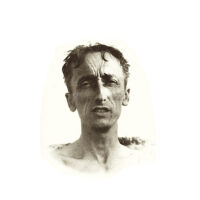Albert Pröbstl will lead a working group titled “The ‘Polarization Realm’—From Physics to Chemistry to Biochemistry: a Path with Gaps in Awareness” at the Natural Science Section conference to be held October 10 to 13 in Dornach. Here is a taster.
Polarization of light refers to the spatial orientation of light. It was studied scientifically from 1808 onwards. After the optical activity of substances was discovered in 1815, it led to the tetrahedral model of carbon in 1874. The working group will explore a Goethean approach to carbon chemistry and biochemistry. We will begin with new optical experiments using large, transparent, optically pure double spar crystals (lime) and mountain crystals (quartz/silica) to show how conceptual forms depend on the completeness of a series of experiments. Simple experiments will be used to show that smell and taste can distinguish between optically active image and mirror-image isomers.
Now, after 150 years of using the tetrahedral model of carbon, there are many Goethean-anthroposophical questions about the chemistry and biochemistry of carbon. Organic chemistry has developed by leaps and bounds since 1874. However, at a teachers’ conference in 1922, Rudolf Steiner called the emerging chemistry a “symbolic chemistry.” It was precisely through the spatial understanding of molecular structures that many new structures, and, thus, substances came into the world that are “alien” to nature and cause problems. However, we can see that a chemistry of the living follows completely different paths than a chemistry of the dead in the laboratory. The former almost always produces optically active substances, for example, L-amino acids, while the latter can only produce amino acids in such a way that they do not show any optical activity.
What can a model such as the tetrahedral model of carbon do, and what can it not do? Why does the chemistry of the dead differ so markedly from the chemistry of the living? How did the “living” emerge from the “dead”? Or was it the other way around? How can we arrive at a positive image of carbon in view of the need to “reduce carbon”?
Rudolf Steiner described carbon chemistry as “symbolic.” On the other hand, in 1924, in the third lecture of the Agricultural Course, he described carbon as the physical carrier of all forms in the living world. He even said that carbon is the “Philosopher’s Stone”! How can we understand these statements today?
Event
The Natural Sciences Section’s autumn conference, Evolving Science 2024, “Diversity Strengthens Identity,” will take place in Dornach from October 10th to 13th. Albert Pröbstl will lead a working group on this theme.
Image Event flyer





